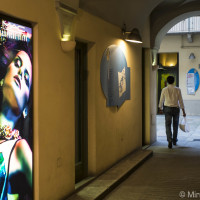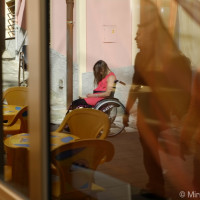Yes, I know. The Fujifilm X-Pro 1 is far from new. But as the old saying goes, better late than never. 🙂 A couple of months ago, I wrote up a first impressions article after spending a weekend with the camera in the city of Genova. Since then, the camera has continued to intrigue me, and I knew I wanted to spend more quality time with it. Then, in July, I had the chance to take a deeper look at the X-Pro 1 thanks to the generosity of the Fujifilm Italia team who kindly sent me one to test for two weeks.
I won’t go into all the nitty-gritty technical details as there are many thorough reviews out there already. This is more of a personal evaluation of the camera and the Fuji X system in general. I also explain why I am seriously considering it for work and most importantly, why it could be the camera that allows me to drop the DSLR system entirely.
Fuji X-Pro 1 Main Specs
- Sensor: 16.3 million pixels – 23.6mm x 15.6mm (APS-C) X-Trans CMOS
- Lens System: interchangeable lens system – Fujifilm X Mount
- ISO Sensitivity: 200 – 6400, extendable to 100, 12800 and 25600 (JPG only)
- Continuous shooting: max 6 fps
- Autofocus: TTL contrast AF
- Internal Stabilization: No
- Viewfinder Hybrid (optical and electronic)
- LCD Screen 3.0-inch LCD monitor, approx. 1,230,000 dots
- Movie recording: 1920 x 1080 pixels (24fps) with stereo sound
- Picture Profiles Film Simulation modes
- Water and dust proof No
- Sensor Cleaner Yes
- Built-in Flash No
- Extras: Motion Panorama, Multiple Exposure modes
- Dimensions: 139.5 (W) x 81.8 (H) x 42.5 (D) mm / 5.5 (W) x 3.2 (H) x 1.7 (D) in
- Weight: Approx. 450 g / 15.9 oz. (including battery and memory card)
It isn’t a full frame camera but I don’t care

If I think of Fuji X cameras such as the X-Pro1 or the X100s, the first positive point that comes to my mind is image quality. I love the X-Trans sensor. I love the quality of the out-of-camera JPGs and their unique colour reproduction. I love the great versatility of the RAF files and what I can achieve with them.
If you mount the right lenses, such as the 35mm f/1.4 or a Leica lens with an adapter, you will very rarely miss having a full frame sensor. I own a Nikon D700, an Olympus OM-D E-M5 and a Fuji X100s and when it comes to pure image quality, the X100s is my first choice. Of course, the X100s can be limiting due to its fixed prime lens, while the X-Pro1 offers the advantage of an interchangeable lens system.
It is a question of the visual appeal of an image, not a question of sensor size.

When I took my first pictures with an X-Trans sensor camera, which was the X100s, I saw right away that something was different. I remember looking at Heather and saying something along the lines of “Wow, these colours are something else.” I had only been looking at those first pictures on the camera’s rear LCD screen, but it was enough to feel the difference. So when I got the X-Pro1, I already knew I would find something familiar, despite the X100s’ sensor being an update on the X-Pro 1’s.

My absolute favourite Film Simulation Mode is Astia; it really stands out from the usual standard/vivid profiles you find on other cameras. I love how this mode renders colours on the warm end of the spectrum, such as yellow and red.

The truth is that when I use the X-Pro 1, I see it as a perfect high-end portable camera. I never think for a second that it is an APS-C sensor. I have never found myself in a situation where ISO or shallow depth of field wasn’t satisfactory.

The sensor has a great amount of dynamic range that you can obtain not only by post-processing the RAW files but also by choosing the right settings on-camera. In situations like sunsets or a cloudy days, you can set ISO to 400 or even 800, set DR to 200 or 400 and shadows at +1. And I can guarantee that you will be surprised by the results.
I only wish that I were able to post-process the RAW files with the same tonal range I get with the JPGs. There are alternatives to the standard Adobe Color profile such as the Huelight Color Profiles that enhance colours and skin rendering, or other RAW developing software that read Fuji X-Trans RAF files more accurately, but none of them will match the exact colours the sensor delivers on-camera.
That said, the X-Trans CMOS sensor is also the “least digital” sensor that I have had the chance to use. Its great dynamic range in shadows, highlights and its unique way of reproducing colours definitely closes the gap with film, and makes the task of emulating the look of Fujifilm film easier. A great example is Rebecca Lily‘s new Pro Set II for Adobe Lightroom which I am currently testing. They have been specifically developed with the X-Trans sensor in mind thanks to its film-like palette.


N.B.: I will post an article specifically about this topic in the coming weeks.
Trusting the high ISO of the X-Pro 1

The sensor is an X-Trans type with 16MP of resolution. It is perfectly clean up to 3200 ISO, and is more than usable at 6400 ISO. In fact, I would even say that 12800 ISO is satisfactory in some situations. One of the reasons I love to use this camera is because I can trust its ISO. I don’t hesitate to set it to Auto mode and focus mainly on my aperture and shutter speed because even if the camera goes up to 1600 or 3200 ISO in a situation where I could use less, the images will still be clear, sharp and noise-free. Furthermore, the X-Trans sensor has a better ISO/noise ratio than other cameras and I find the “grain” more “organic” and less digital than other sensors, another aspect that brings the image closer to the film look.
So even if I go up to 6400 ISO, I am not bothered by the picture’s appearance as the grain it produces is quiet pleasant to the eye.
This is really a great advantage in my opinion, especially for those like me who prefer to work with natural light.


Mount prime lenses on the X-Pro 1
The X-Pro1 has been designed first and foremost for professionals, so Fuji wanted to build high quality lenses to match the great quality of its sensor. When the camera was released, there were only three lenses available, but now there are eight from Fuji and two new lenses from Carl Zeiss. Even more high-end lenses will be released within the next few months, including a 56mm f/1.2 (85mm equivalent). This portrait lens will certainly expand the possibilities for professionals who demand only the best.
For me, the X-Pro 1 is meant to be used with prime lenses. I have nothing against zoom lenses and the recent XF 55-200mm is very nice (check out my two hands-on reviews here and here) considering its non-constant aperture, but I find it upsets the equilibrium of the compact body. I prefer the ergonomics of the system with small and fast lenses.

Fujifilm XF 55-200mm f/3.5-4.8 R LM OIS at 95mm
Fujifilm XF 55-200mm f/3.5-4.8 R LM OIS at 78mm
My favourite XF lenses are the popular 35mm f/1.4 and the 14mm f/2.8. The first is one of the best 50mm equivalent lenses I’ve ever used. I love the bokeh and how it is sharp at all apertures.
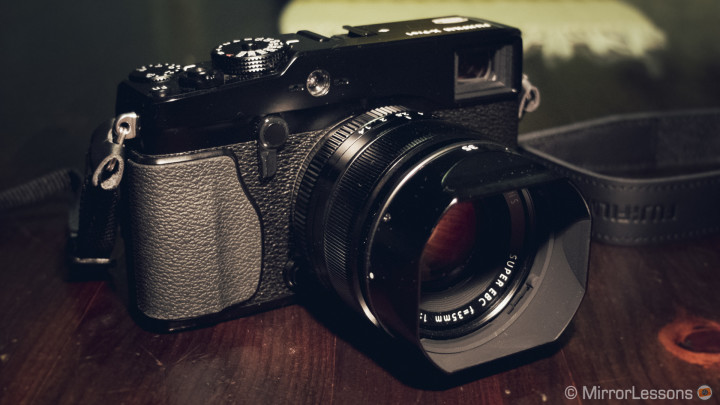
From JPG (Astia)
From RAW
The 14mm f/2.8 is a great wide angle lens; I really enjoyed using it. It is the equivalent of 21mm on a full-frame camera, which makes it perfect for landscape and architecture shots.

HDR merged from 3 shots
I also used some Leica M lenses with an adaptor after the focus peaking firmware update and I must say that they suit the X system very well. I mainly used the Summicron 35mm f/2 but it wouldn’t be my first recommendation as the difference between it and the XF 35mm f/1.4 isn’t really noticeable, but if you can get your hands on some Summilux lenses like the 21mm or 24mm f/1.4, or the Summicron 92mm f/2 for portraits, it is really worth it and the focus peaking works like a charm (more on that later).

A camera that gets better with age
Just as wine becomes tastier as the years pass, something similar happens with the X-Pro 1 as well. When the camera was released in March 2012, its Achilles heel was the AF contrast detection system. It was too slow for many photography genres like street photography where you need the camera to lock fast and take the shot. Often, it wouldn’t lock in low-light conditions either. It was an innovative new camera but poor AF can turn any photographic outing into nightmare.
Since it was the first model of the new system, I wasn’t expecting perfection but this major issue stopped me from considering it as a serious option at first.

Then, Fuji took note and started to improve the camera, not by releasing a new model as many other brands would have done, but by releasing firmware updates. Some functions were enhanced, a new firmware for both the body and lenses with improved AF were released, and most recently, Version 3.01 has added a focus peaking feature.
I tested these improvements by bringing the camera with me for an event assignment at the National Automobile Museum in Turin.
I used the X-Pro1 with the 35mm f/1.4 and its latest firmware updates mainly to capture faces, laughs and people chatting and having a good time during aperitifs. The AF never let me down, and I mean never, even after the dinner when there was only artificial light illuminating the event. Unfortunately, being a private event, I cannot share the pictures with you, but I can happily confirm that I am no longer afraid to use the X-Pro 1 due to AF issues.
It is a wonderful improvement and in my opinion other brands should follow in Fuji’s footsteps.
Instead of releasing a new version of the same model every 6 months like Sony does with the Nex series, Fujj prefers to build a high-end model that will last at least two years and improve it with worthy software updates for free.
Note: the latest firmware update is the version 3.40 released in December 2014 that adds the AF-MF function. Click here to see a list of all the different firmware updates for the Fuji X-Pro1.
I didn’t test the AF-C mode long enough, but I almost never needed to use it. This isn’t a sports camera and I rarely had to follow a quickly-moving subject. The camera doesn’t have tracking which helps clarify that statement. I am not saying that it wouldn’t be great to have tracking, but for me, this camera suits landscape, portraits, weddings and street photography, and with all of these genres I always use the AF-S mode. That being said, other photographers would love to see improvements in this area and AF tracking is something that Fujifilm has hopefully added to its checklist.
N.B. I mentioned weddings as a suitable genre because I think the minimalistic appearance of the X-Pro 1 can help you approach the bride and groom in a more discreet and affable manner. However, you must know the camera inside and out before you take this step. If you are unsure at the beginning, bring it along with another system you already use (budget allowing). Weddings and events are the limit to the X-Pro 1’s flexibility. It can be done, but only after you have the perfect sense of how the camera will react in any given situation.
Another feature worth mentioning is the new peaking function. It really works well for both the LCD and the EVF. If you are not used to manual focusing, you will need to adapt your eye a little bit as manual focus requires more attention and concentration for the eye, but the peaking really helps a lot. I already use the peaking on my x100s sometimes, and I really enjoyed using the X-Pro 1 with Leica lenses. Looking at the results on my computer, only a few photos ended up being slightly soft.

This function really enhances the possibility to use other lens brands and therefore gives you a different approach to your photography. Leica M lenses are expensive, but you can find some good second-hand deals or look at some other brands like Voigtlaender for example which has several M mount lenses.
A precise feeling in your hand
As you can see from the pictures, the X-Pro 1 has a retro design that will remind you of rangefinder cameras from back in the day. It is very minimalistic with an all-black body, lacking in any other colours except the white writing on it. Even the brand and camera name aren’t invasive on the top of the camera. It is similar to the Leica M-P. I like that the camera is very discreet and this is also why I prefer using primes–smaller lenses keep that level of discretion up.
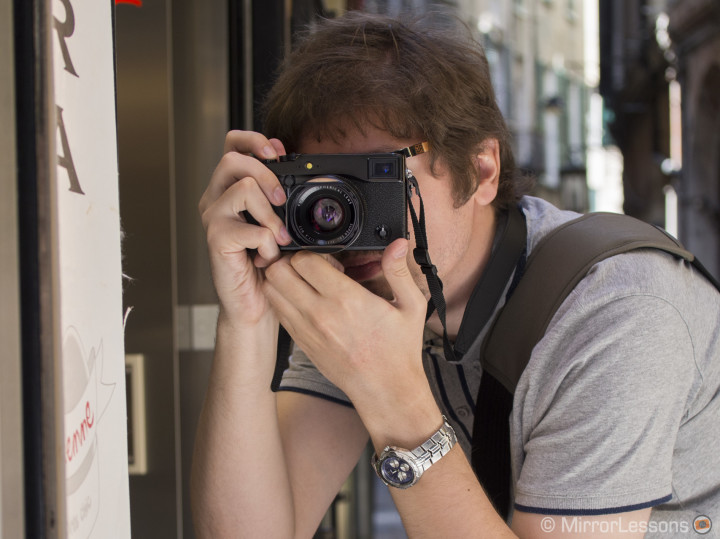

The camera is very simple to use. With an aperture ring on most lenses and a shutter speed dial like old cameras, you basically turn it on, check your ISO (or leave it on AUTO), set your aperture and speed, and start shooting. You cannot get more straightforward than that.
If you want to dig further into the picture settings and menu, you will find them very easy to navigate. The “Q” button bring all the main image settings together, and it is very comfortable to use. You also have a dedicated button for other important settings such as AF, DRIVE (shooting modes) and AE, as well as two function buttons (Fn on top and the “down arrow” on the arrow pad). I should also mention the AF mode selector on the front and the exposure compensation dial on top, which are both very useful when working in aperture priority.

The camera build is very solid as are all the buttons and dials. The grip is great–it feels really nice in your hand without being too heavy.

The cherry on top is the hybrid viewfinder, where you can switch between optical and electronic with a simple switch of the dedicated toggle on the front. The optical viewfinder won’t be effective in all situations because of the parallax issue and because some lens hoods get in the way. It is better to use it with wide angles. With other lenses or if you are focusing very close to the subject, you want to rely on the EVF. I would say that it makes sense to use the EVF 80% of the time, but when you need a clearer and sharper view of your composition or if the lighting is low, it is very nice to be able to switch instantly from one to the other.
A system that aims for perfection
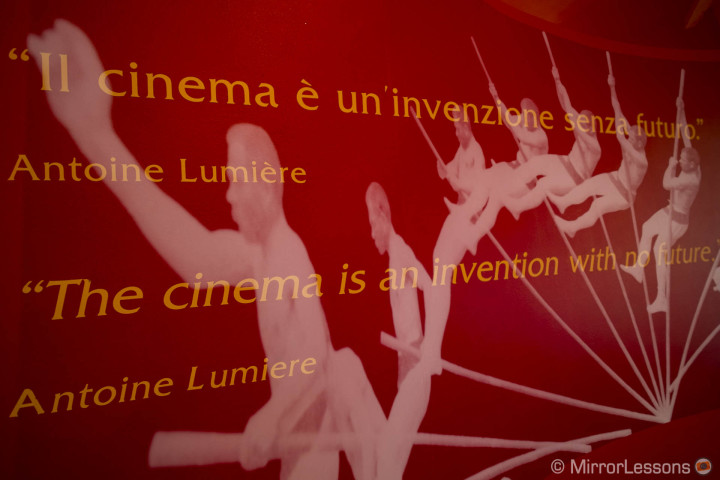
If you have read the entire article, you have probably already guessed that I really love this camera. It wasn’t love at first sight the first time I tried it despite my impressions being positive overall, but the mix of having extra time with it and the addition of the latest firmware updates have made me fonder of the camera than I’d ever imagined.

It isn’t a camera for everyone, and don’t buy it if you don’t intend on using it as a primary camera for your photography or at least some of your photography. The X-Pro1 and the X interchangeable lens system are 100% worthy of being on the front line of every photo shoot you do, unless you are doing sports photography or still life as they require a different sort of gear. It is a real alternative to DSLRs, but doesn’t perform like a DSLR. It is different–more suited to genres where you have time to observe, compose, and take the shot.

HDR (bracketing at 1ev)
Buy it and use it with fast prime lenses. Don’t buy with the intent of using the 55-200mm as your primary lens. If that is your intention, then forget about the X system all together and stick with a DSLR and a good telephoto lens.
The X-Pro 1 is a camera that you want to purchase as a means of updating your approach to photography. Or, if you are an experienced photographer, it is a way of getting back to the basics.
Conclusion and thoughts about the next stage

Right now, switching to the X system is beyond my budget, but if I had the money, I would seriously consider putting the X-Pro1 alongside my X100s and OM-D E-M5 for my work and personal projects as a photographer because it perfectly synthesizes how I want to work: portable high-quality cameras that handle small fast-aperture lenses.
I should also mention that the X-Pro 1 has a little sister called X-E1. It is a cheaper version and lacks some features such as the hybrid viewfinder (electronic only) but both cameras share the same 16MP X-Trans CMOS sensor. So all my thoughts about quality, firmware updates and lenses count for the X-E1 as well. The ergonomics are slightly different and it has a different design. I won’t say more as I have never had the chance to try it seriously, but if you choose it over the X-Pro 1, know that its cheaper price will give you a larger margin to buy more lenses or other accessories you might need for the system.

It still needs some improvement, but seeing how the camera has evolved in this year and a half, I really believe that the system can attain perfection and become something completely different from any other system. Not only am I waiting to become just that bit richer, but I am also awaiting a new model and new lenses, like the recently-announced 23mm f/1.4 and the 58mm f/1.2. At that point, I really won’t need a DSLR anymore.
I realise that I didn’t list any negative points. There are a few but instead of making a list, I can write what I would like to see in the next release:
- improved and new AF system with phase detection, as quick as my OM-D E-M5 or at least very close to it;
- the option to save TIFF files to have a less compressed image with those lovely Velvia/Astia colours;
- a more advanced multiple exposure option where I can choose to blend the alpha channel instead of a fifty-fifty opacity blend;
- three function buttons;
- bracketing up to 5 or 6 shots, not only 3;
- an improved software engine to render the menu and the overall functionality faster and more responsive;
- more resolution for the EVF;
- better video function;
- 1/8000s shutter speed;
Then, improvements aside, I hope to see an X-Pro2 with a new sensor, with increased dynamic range and sensitivity such as native ISO 100 or a maximum ISO of 50200 with both RAW and JPGs.
Another great addition could be internal stabilisation. It would be a great feature that allows us to work better with a slow shutter speed. When I see what I can achieve with the 5-axis stabilisation of the E-M5/E-P5, I really think it could be a killer feature.
Anyway, if Fuji managed to put even half of what I wrote in the next release, I would be more than happy. And for those who wish for a full frame X-Pro, I don’t think it’s going to happen, at least not for now. They would have to change all the lenses, so it wouldn’t make sense with all the new lenses on the verge of being released. My prediction is that there will be a full frame X200 with an organic sensor in 2015. But enough with the wishes and dreams–there is already a wonderful camera to enjoy out there in the form of the Fuji X-Pro 1.
A very special thanks goes out to Matilde and all the Fujifilm Italia team who always show us kindness and support, Heather and MirrorLessons.


